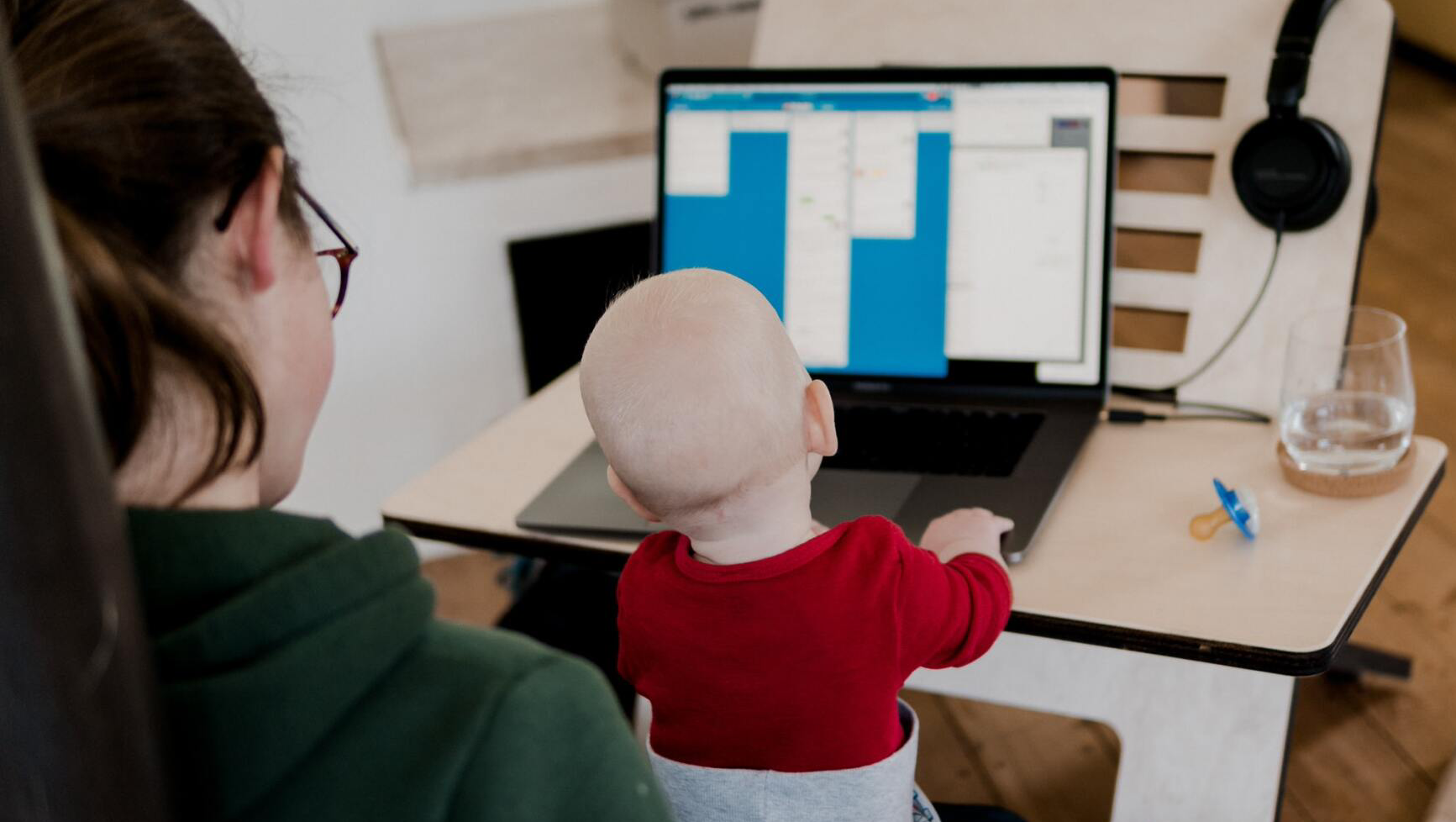Free 2-Page Guide to Offering & Accepting an Apology
- By Bryan Harris
- •
- 30 Jul, 2019
- •


Multi-tasking (the ability to do more than one thing at a time) is an appealing and intuitive idea. The problem is that it’s not possible. Well, it’s mostly not possibly. Let me elaborate.
The truth is that you can
do more than one thing at a time. You can walk and chew gum, you can eat dinner while watching your favorite TV show, and you think about planning a lesson while doing laundry. But in each of those examples, only one of the things actually requires you to think, process, or comprehend something.
When we discuss the perils of multi-tasking, we are referring to those situations where we attempt to do more than one thing that requires attention, thinking, or cognitive processing.
Without going into great lengths about the role of attention and the brain, suffice it to say that you can only pay attention to one thing at a time. More specifically, you can only consciously process and focus on one thing at a time.
When we attempt to multi-task, what our brains really do is called task-switching. Since our brains can only consciously process one thing at a time, when we attempt to multi-task, what our brain actually does is switch between tasks or areas of focus. Some of us can do this task-switching very rapidly. So, you might say, “That sounds fine to me, what’s the problem?
” While some of us are adept at task-switching rapidly, there is always a cognitive loss or a “switch cost” as some researchers refer to it (Altman, 2017).
That “switch cost” ends up impacting our productivity and our stress levels. In the short run, it seems like we get more done but in the long run, what we get “done” ends up being less than our best.
Here is the real definition of multi-tasking: screwing up several things simultaneously.
Imagine this: you are grading papers while at the same time preparing dinner for your family. You might think you are multi-tasking when in reality you are switching (perhaps quickly) between two different things that require your attention. For example, you are in the middle of grading a paper when a timer goes off. You stop grading the paper and take the meal out of the oven. Since your attention has been split (albeit for a short period of time), when you go back to grading the paper, you will need to take a moment to remember where you left off. In essence, there is a loss of “flow” and an impact on short-term memory. When we do this often, the brain becomes fatigued and we make more mistakes. That's very stressful and frustrating.
If you need more convincing, a Stanford University study found that attempting to use electronic devices to multi-task negatively impacts memory (Uncapher & Wagner, 2018). And, other research suggests that there can be up to a 40% decrease in productivity when we attempt to rapidly switch between tasks that require attention and focus (Rubinstein et al., 2001).
But, can't multi-tasking make you more productive? That’s a tricky question. If by “productive” you mean to get lots of things done or checked off your to-do list, maybe. But, not everything that gets “done” is going to get done well. So, consider those tasks in front of you and think about those things that require your focus, attention, and thought. When something needs your complete attention and focus, put yourself in a situation where you can devote your attention to it – set aside the electronic devices, close out all the other programs running on your computer, and shut off other competing sensory inputs such as the radio and TV.
Bottom-line,
we are better off focusing on just one thing at a time. For efficiency and accuracy, avoid doing those things that split your attention. For a deeper dive into this phenomenon, read John Medina’s book Brain Rules (2014). In that book, he devotes an entire chapter to the role of attention in the brain, and he addresses the damage done when we attempt to multi-task.


Feedback is essential.
Not too many informed educators will argue that fact. The importance of quality feedback to support
student learning is ubiquitous.
But there is one thing that is often overlooked when it comes to feedback – how to prepare students to receive it. Quite simply, giving effective feedback is only half the equation. We must also prepare students to receive, process, wrestle with, and consider how the feedback will be used.
Before we dig deeper, if you’d like a quick overview of how to give feedback and why it works, click here , here , or here. In fact, feedback is one of John Hattie’s top 10 methods to increase student achievement.
For our discussion here, we’ll adopt Grant Wiggins’ definition of feedback – actionable or useful information about how we are doing in our efforts to reach a goal ( Wiggins, 2012 ). More specifically, feedback is information about the gap between our performance and that desired goal (Wiliam, 2019).
As educators, we know that we need to provide students with feedback in order to enhance their learning. The importance of providing feedback to students is well established. And, there are also tons of blogs, resources, and books available that outline effective strategies for providing feedback to students (shameless plug – my 2017 book titled Battling Boredom Part 2 has a great section describing more than 10 effective feedback strategies).
With that as our background, let’s not lose sight of the fact that giving feedback is pointless unless students are in a position to grapple with it. So, here are 5 keys to helping students act upon feedback:
Acknowledge that receiving feedback can be emotional . Those emotions might range from pride to disappointment, from confusion to outright rejection. The truth is that when we have to deal with information about our status or growth, it can elicit a range of emotions that must be dealt with. Teach students that its OK to have an emotional reaction to feedback, particularly when that information/feedback conflicts with their own beliefs or opinions. Think about this way – if a student puts forth a decent amount of effort towards mastering a skill or completing a task and then they don’t quite meet the expectations set forth by the teacher, it can be devastating. In essence, it’s normal to be disappointed when you fail to meet expectations. It’s also normal to feel pride and relief when you do well. So, teach students not only to tackle the feedback, teach them to appropriately handle to emotions that are likely to result from the feedback.
Help students to understand that feedback is about the task or progress, not the person. As we provide feedback and information to students about their growth, help them to understand that the focus is on their progress, not on their identity. This is a fine line of course and it’s easy to understand from a purely logical point of view. It’s much more difficult, of course, to put into practice when you are on the receiving end of feedback that might elicit an emotional response. But, the more we help students understand that feedback is less about the person and more about growth, the more likely they’ll be to truly tackle the actions required to process and think about the feedback.
Concede that feedback is often subjective . As much as we might utilize rubrics, standards, and clear models or examples, the fact is that teacher feedback is frequently subjective in nature. As teachers, we sometimes make mistakes or misunderstand what students are trying to communicate or what they are demonstrating. When getting students to process feedback, give them permission to question the outcomes or determinations. Teach students to advocate for themselves in order to better understand how the feedback was determined and what they might do about it.
Speaking of advocating, teach students to ask questions about the feedback. Recall that feedback is defined as actionable information about a person’s progress, efforts, or skill development. If there is nothing that students can act upon, it’s not feedback. It’s this simple – if a student cannot do something with the feedback/information, it’s not feedback. The information might be valid and relevant, but if there is nothing students can do with that information, it doesn’t meet the criteria of feedback. This, by the way, is the primary reason that grades are not synonymous with feedback. Most of the time, when students receive a grade on an assignment, there is nothing they can do with the information. Can grades be a source of feedback? Yes, but only when students do something or act upon the grades. So, provide students with the time, questions, and structures (examples: written reflections, partner discussions, teacher-student conferences, test corrections) to ask questions of themselves and the feedback they are receiving.
Speaking of time, heed the advice of Dylan Wiliam - Don’t give feedback unless you allocate time for students to use it. Feedback requires action on the part of the individual receiving it. Action requires commitment and time. As a result, dedicate time for students think about, process, and take action on the feedback. This allocation (and this commitment) should be considered when planning lessons and activities for students. When we plan for something ahead of time, we are much more likely to actually follow through.
As a bonus idea , model the use of actionable information/feedback for your students. In other words, don’t just expect that students respond appropriately to feedback; we should do it as well. Click here for a great strategy that elicits feedback from students (and shows them that you can also follow the 5 keys outline above.


Reframing is great way to practice resilienc
y
.
But first, a quick review. When it comes to the concept of resiliency, here's the main message: taking care of yourself is not selfish. In fact, it's essential.
Because the job is stressful, we need to take time to develop and refine our own ability to cope during challenging times. If you are to become the superstar educator you were meant to be, you have to take care of yourself. A great starting point is practicing gratitude.
Even when gratitude is a regular part of our thinking process, there are still times when the situation or events in the classroom require us to do a few more mental gymnastics. When times get stressful or difficult, reframing the situation is a great tool.
In a nutshell, reframing is the practice of taming that internal voice. It's about talking to yourself and telling yourself the truth when times are difficult. It's about choosing to think differently (and talk to yourself differently) when faced with a challenging situation.
On a recent trip to the San Francisco, I got stuck in traffic. Really horrendous traffic. Finding myself getting frustrated at the lack of progress (and the confusing lay out of streets and freeways in the Bay Area), I started to grumble. I wasn't pounding the steering wheel in anger, mind you. But I was annoyed and the charm of a beautiful city was quickly wearing off.
In the midst of that traffic-induced frustration, I reframed the experience. I chose to look at my current situation from a different perspective. That's all reframing is; choosing to view a situation, a relationship, an environment, or a context from a different point of view. While it's not necessarily easy, it's extremely powerful.
Here is what I said to myself, "At least you get to spend some more time in this new rental car. When you get home, you drive a 6-year-old Honda that is overdue for an oil change and a tire rotation. And, at the end of the day you don't have to get this car washed. Someone else will do that."
Reframing is all about looking at something differently. Because I chose to think about the San Francisco traffic differently, I was able to lower my levels of stress. Resilience consists of two things: how we think and what we do. It consists of our thinking patterns (including that voice inside our heads that we talk to) and the coping mechanisms we use when things begin to be challenging.
When I told myself that the traffic delay was an opportunity to enjoy a new car, it changed the way I thought about the situation. I didn't paint a false picture that it was a great experience or that I was lucky to get caught in traffic. I didn't tell myself that it was equivalent to a pleasant stroll along the beach. But that simple little change – electing to focus on the positives of my current situation – lowered my stress, re-oriented my thinking, and allowed me to relax a bit.
In school settings, when we practice the art of reframing, we begin to view challenging students, difficult colleagues, un-communicative leadership, or inadequate resources differently. Although a bit cliché-ish, reframing is telling yourself that the cup is indeed half-full. It's not actually changing the situation; it's merely choosing to focus on the positives of the experience.
In full disclosure, reframing is not always easy. It takes effort to find the positive in the midst of an ugly or uncomfortable state of affairs. And, it takes practice. Here are two great tools you can use to help instill a habit of reframing:
-
Go from "have to" to "get to" – When you think of some of the duties and tasks that you are responsible for, adopt the mindset of "I get to..." rather than "I have to...". For example, you may need to return a phone call to a parent that you anticipate will be challenging. Rather than say, "I have to call this parent", say to yourself, "I get to call this parent". That one small change may be enough to shift thinking in order to help see the phone call as an opportunity rather than an obligation. Plus, when we view things as opportunities, we are less likely to procrastinate or avoid them altogether.
-
Repeat the phrases, "Nothing lasts forever" and "This too shall pass". A variation of those statements is the question, "Will this matter in 1 week?" Much of the time, the answer is, "No, not really". Why get upset, bothered, or stressed out about things that, in the big scheme of life, don't matter all that much.
Dr. Steven Wolin, an expert on the development of resilience says this, "Reframing is at the heart of resilience". Resilience is not about ignoring or downplaying the challenges in front of us (or the past traumas we are overcoming), it's about looking at them differently. Reframing is especially important as we strive to meet the needs of students who may have behavioral and/or learning difficulties.
Application Point: Follow the advice of Dr. Kenneth Ginsberg (a physician who works with children overcoming serious medical issues). He reminds us that in order to thrive, we must view the people around us as individuals with strengths, hopes, dreams, and assets. The people around us (although they might be a source of frustration or confusion at times) are not broken people who need to be fixed. For some of us, that is a significant shift in thinking right there – even the "problem" kids and the difficult colleagues have strengths. When we focus on those strengths, great things happen.
Take a moment and think about a student who is currently struggling in your class. They might be struggling because of an academic gap or they might be demonstrating negative or unproductive behaviors. List that child's strengths.
Is that child passionate? Caring? Do they have great attendance? Do they stick up for their friends? Are they an athlete or cook or artist or dancer?
When we begin to view others as unique individuals with discernible strengths, we can begin to reframe our interactions with them.
As a super-extra bonus idea, try this: after you've made that list of a student's strengths share it with that student and their family. Tell the child all the good you see in them. Tell the parents as well. The simple act of identifying and communicating those strengths will do wonders for both teacher and student.

|

School's out for Summer! (cue Alice Cooper)
The school year is over (or almost over) for students and teachers all over the
country.
When summer arrives, one of first things we do is catch our breath - take a
couple weeks to rest and recoup. That's necessary and important. Teaching
is an emotionally-taxing job and it is essential to take some time to focus on
self.
After that much-needed break, just about every teacher I know spends some time
over the summer reflecting on the past year. They deliberate, plan,
celebrate, consider changes for the coming school year, and probably do a
little bit of shopping.
As you consider changes for the coming school year, there is a super-simple and
extremely powerful tool at your disposal that can help bring clarity to the
planning process. It's called the Keep-Start-Stop
process.
Here's how it works. Take a blank sheet of paper and divide it into 3
columns. Above left column, write the word Keep
, above
the middle column write the word Start
, and
above the right column write the word Stop
.
The process itself is fairly straightforward. As you begin planning for next school year, list those things you'll keep doing; those things that have proven successful and that you have evidence to support continued use.
You'll also want to give some consideration to strategies, approaches,
programs, or techniques that you want to start doing. No doubt there are
some things you've always wanted to try...some projects, strategies, or content
that you've said to yourself, " I need to give that a shot
".
Well, if we don't plan for it, it's not likely to happen. Let's be
honest, once the new school year starts, we go 100mph for 180+ school days and
it can be a real challenge to try new approaches after the school year begins.
Finally, there are no doubt some practices that should be taken out of the
rotation. Maybe they are strategies or units or resources that at one
time seemed useful but just are not quite connecting with your students
anymore. To make room for trying some new things, we've got to clean out
the toolbox of things that are not getting us the results we want. Put
bluntly, there are probably some practices that need to be stopped and replaced
with better ones.
If that last part got your attention
(there may be some practices
that just are not working anymore), you might be interested in a free report
titled Cleaning Out the Toolbox - Student Engagement Strategies that Don't
Work
. Intrigued? Send me an email and it's all
yours. Trust me, you'll want to see what it says. You might even be
a bit surprised at the some of the "tried and true" strategies that
actually stop student engagement.

Classrooms are places with often competing priorities – testing, schedules, curricular demands, and the like are not always within the direct control of classroom teachers. I get that.
While not everything can be fun, its important to know that when classroom activities are fun, enjoyable, and pleasurable some amazing things happen. Most notably, when activities are perceived as fun the brain responds with a release of the neurotransmitter dopamine.
Why does dopamine matter? It’s the chemical most commonly associated with pleasure and reward. When we experience something enjoyable, our brains reward us with good feelings as if to say, “Hey, that felt good. Remember to do that again.” Not only does dopamine make us feel good, it helps with attention, motivation, and memory.
That’s an important message: dopamine levels are associated with memory, attention, and motivation! Aren’t those the big three (along with getting kids to behave better) that teachers are always striving to improve in their students? If students are disengaged and bored, there will be lower levels of dopamine. If they are engaged and having fun, dopamine levels increase.
Bottom-line – dopamine is a classroom teacher's best friend.
There is also some interesting research that suggests that merely labeling something as “fun” helps our most underachieving students the most (Hart and Albarracin, 2009).
So, where do we start? Certainly, giving some consideration to highly-engaging and fun activities is worth the time. I’ve got tons of resources and ideas in two books and for free on my website.
But the easiest place to begin is by simply asking your students. As this school year winds down, take the time to simply ask students what they perceive to be fun and enjoyable classroom learning experiences. Do some informal surveying of your students with questions like, “What was the most fun thing we did this year?” and “What changes could I make next year in order to make the lessons more fun and engaging?”
For a quick and simple Course Evaluation tool, click here.

Putting It All Together
Although this intervention is often used with all students, it can be particularly powerful with students who challenge authority or have difficult, overt behaviors. Before using the intervention, it is helpful to create a worksheet or handout that lists questions or comments to rank on a Likert-type scale. Talk with the student and use an Engaging Frame such as “Becky, my goal is to become a better teacher, and I couldn’t think of anyone better than you to give me some
feedback about how I teach.” Ask the student to provide feedback on questions or statements such as the following:
My teacher provides clear directions. 1 2 3 4 5
My teacher cares about me. 1 2 3 4 5
The lessons and activities are fun. 1 2 3 4 5
Students are treated fairly in class. 1 2 3 4 5
My teacher is organized. 1 2 3 4 5
Grades are fair and accurate. 1 2 3 4 5
Tips and Variations
● Depending on the student, consider including some open-ended questions, such as “One thing I would change about this class is _____.”
● Course Evaluations are powerful because they can open a line of communication, but the feedback should never be used as a punishment or as a way to make the child feel guilty if he or she provided negative ratings or comments.


